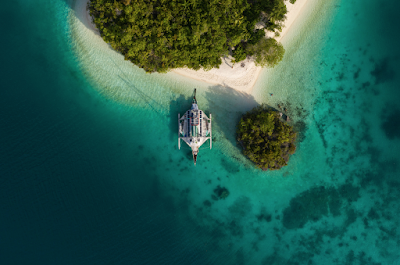About Raja Ampat, Indonesia
More than 2,500 tiny islands and reefs make up the isolated Indonesian archipelago of Raja Ampat, which is located near the northwest corner of the island of New Guinea. The term Raja Ampat, which translates to “Four Kings”, refers to the four large, mountainous islands of Batanta, Misool, Salawati, and Waigeo. The 43,000 square kilometres of land and water that make up the archipelago are sparsely populated, with the majority of the islands being uninhabited. Raja Ampat (as well as the nearby Savu and Banda Seas) is home to some of the world’s highest marine biodiversity, which is why Raja Ampat snorkeling is literally unbeatable. Raja Ampat has become the focus of extensive research and conservation efforts by international and local organizations, and a hotspot for snorkeling. Today, much of Raja Ampat is protected as part of the Raja Ampat Marine Protected Area which covers 1,185,940 hectares (2,930,522 acres).
Raja Ampat snorkeling offers more than 1,400 fish species, 550+ species of reef-building corals (75% of the world’s coral species), 17 species of marine mammals, 25 species of mangroves, and other impressive species such as a variety of whales, dolphins, dugong, sea turtles, walking sharks, and manta rays. New species are frequently still being discovered in Raja Ampat, adding to the already impressive totals.
Numerous species of unique wildlife, flora, and endemic birds (such as Wilson’s and Red Birds of Paradise), call these limestone karst islands home.


